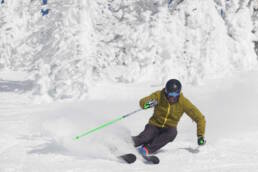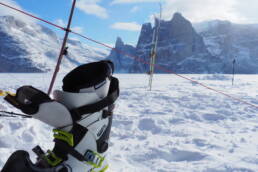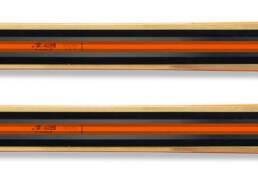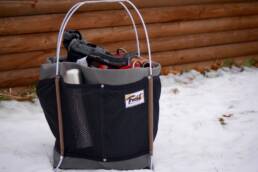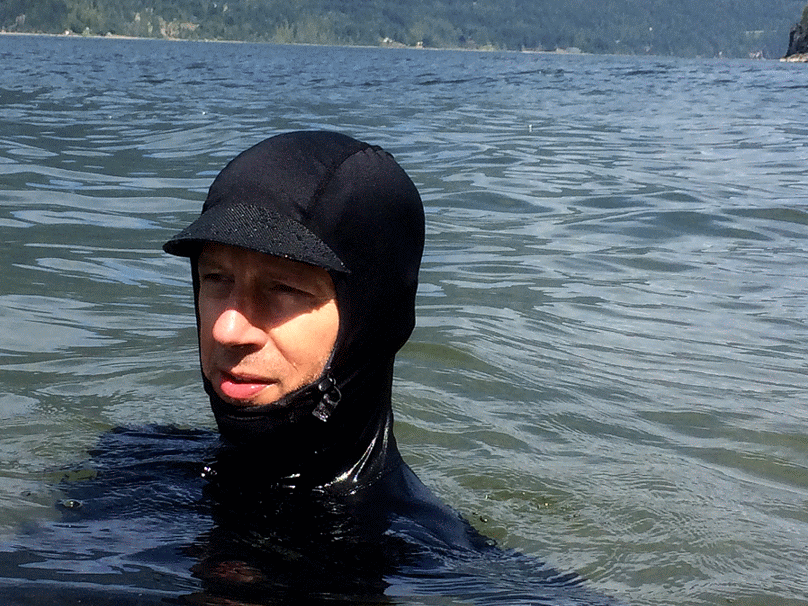Attitude Skis are the latest offering by the Fels brothers and engineer David Horsefield. Do they have a good attitude? Read our honest review to find out. Words and photos by Peter Moynes.
In 1985 Chris Fels and his brother David set out to design and create a ski that was effortless to use and that helped skiers improving their carving skills more quickly. The Fels ski was born and has been shredding slopes from its native Quebec to far-flung lands ever since. Over the years, the brothers continued to improved their design and now, having combined forces with Golden, BC-based engineer David Horsfield of Thoroughbred Skis, the three have introduced Attitude Skis. I was given the opportunity to take them for a rip and see how they feel.
Snapshot: Attitude Skis
-
-
- Pros: These things turn on a dime!
- Cons: You have to work harder in the deeper snow.
- Price: $925 to $1,620 Cdn
- Who Should Buy: Anyone who skis a majority of groomed terrain. If you love to carve a deep turn, you will love these skis.
- Who Shouldn’t Buy: Beginners. It would be like learning to drive in a high-end sports car.
- Helpful Hack: These are build-your-own skis! Check out the dimension choices at skifels.ca/build-your-attitude-ski.
- Author’s overall rating: 9/10
-
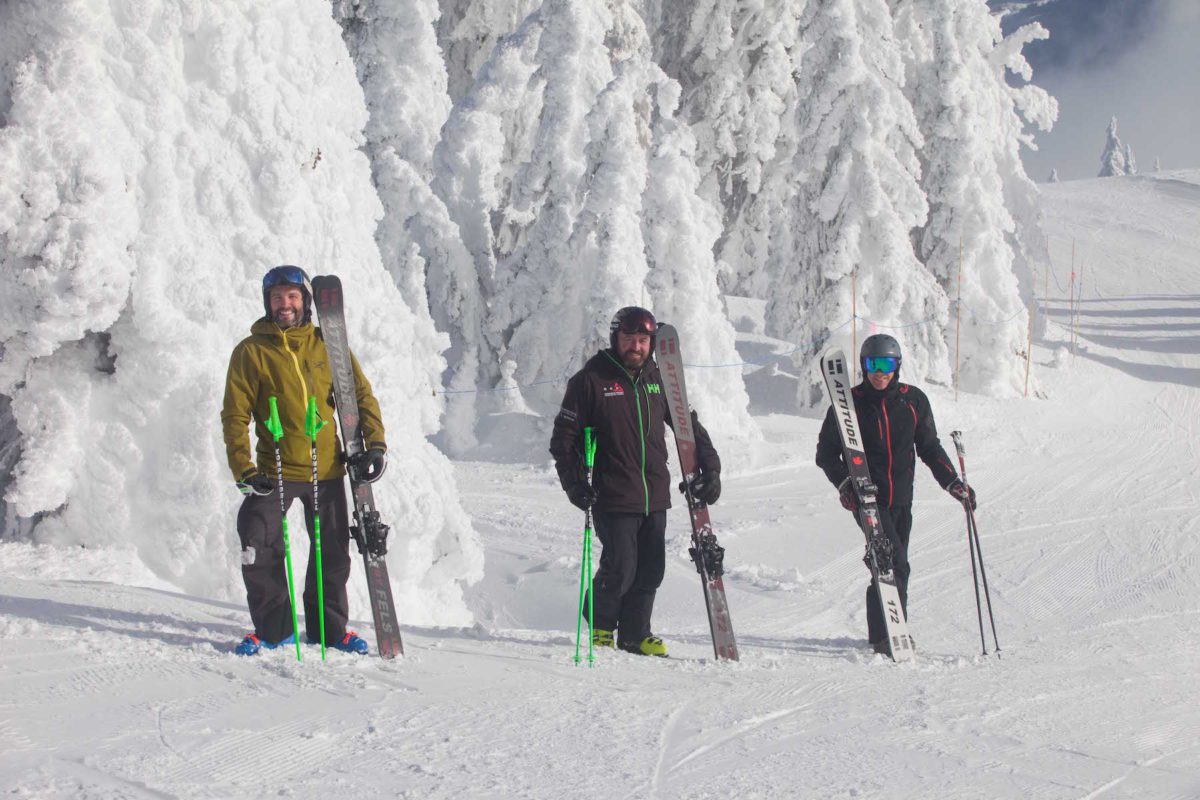
The Test
For this review I enjoyed a bluebird day with moderate temperatures at Red Mountain Resort in Rossland, British Columbia. I tested both the maple core version of the Attitude ski as well as the Carbon Fibre version on a variety of terrain, including Red Mountain’s extensive network of groomed runs.
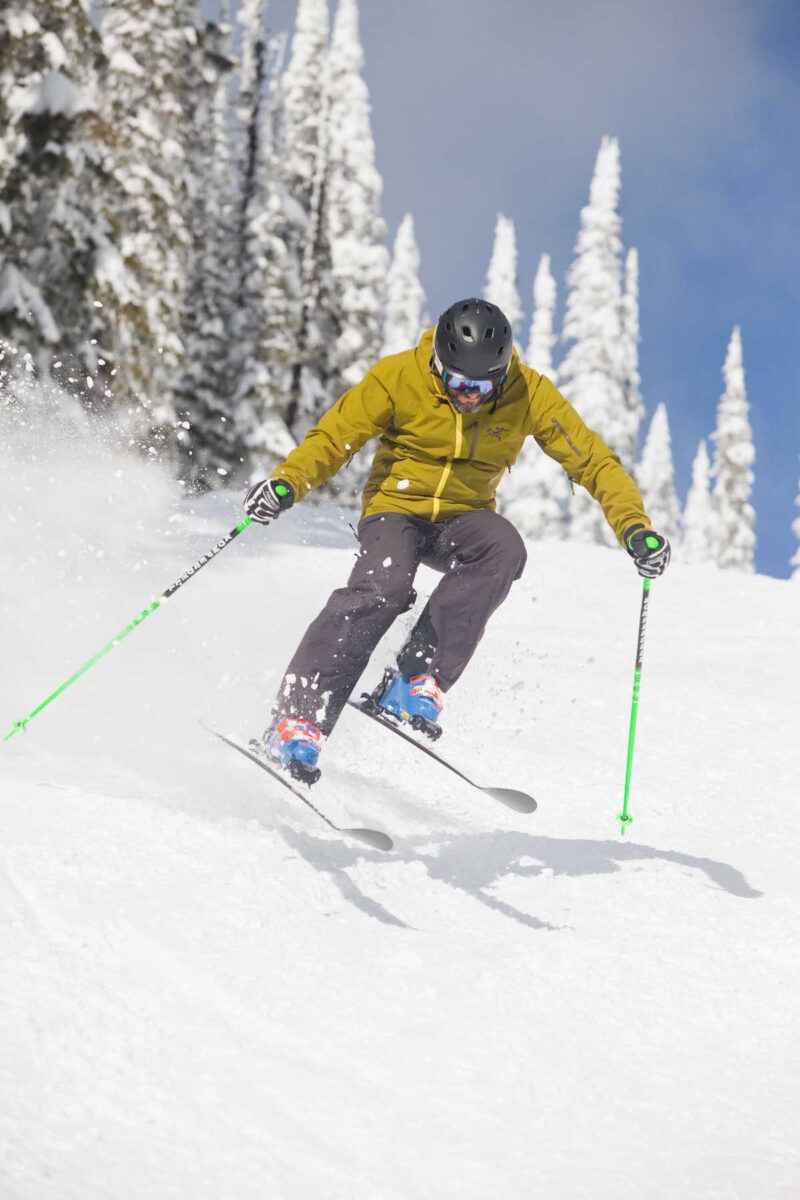
The Verdict
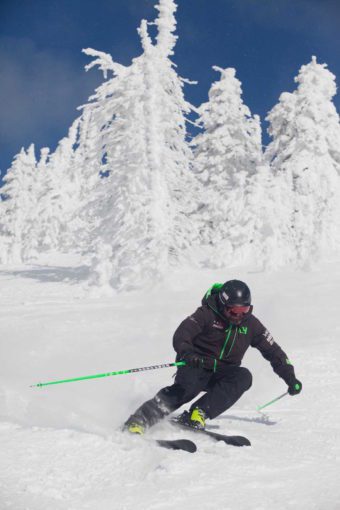 No discussion about Attitude skis should start without first discussing geometry. The Fels brothers and David Horsfield are engineering wizards and together they’ve come up with a patented design that gives the skier more performance with less effort. The secret of the geometry is, according to David, “the interrelationship between the sidecut profile and the camber profile relative to the boot sole midpoint.” In more detail, the effect of placing the waist of the ski further forward and the apex of the camber further back relative to the boot sole midpoint provides effortless steering from the front of the ski allowing it to be easily steered or carved through a turn. The camber apex being behind the boot sole midpoint provides more pressure to the tail, which enables the ski to have impeccable holding capacity designed to enhance the skier’s performance through the completion of the turn.
No discussion about Attitude skis should start without first discussing geometry. The Fels brothers and David Horsfield are engineering wizards and together they’ve come up with a patented design that gives the skier more performance with less effort. The secret of the geometry is, according to David, “the interrelationship between the sidecut profile and the camber profile relative to the boot sole midpoint.” In more detail, the effect of placing the waist of the ski further forward and the apex of the camber further back relative to the boot sole midpoint provides effortless steering from the front of the ski allowing it to be easily steered or carved through a turn. The camber apex being behind the boot sole midpoint provides more pressure to the tail, which enables the ski to have impeccable holding capacity designed to enhance the skier’s performance through the completion of the turn.
We hit everything from high-speed groomers to off-piste chop and the skis performed amazingly well. However, in the deeper pow I had to work a little harder than I do while on my powder skis. That’s to be expected though, given the dimensions and geometry. I also skied both the maple core version of Attitude skis as well as the carbon fibre one and I actually prefer the stability provided by the wood core. I felt there was less chatter in the turns than with the lighter carbon ski. I could really rail into a turn and feel confident that the ski would hold the edge.
Overall, I have to say Attitude skis are incredible for resort-style skiing. These are total groomer eaters. I’m pretty sure I looked like Alberto Tomba out there. But they’re also great in varied snow conditions and the fact that a Kootenay engineer had a hand in their design makes them that much sweeter.
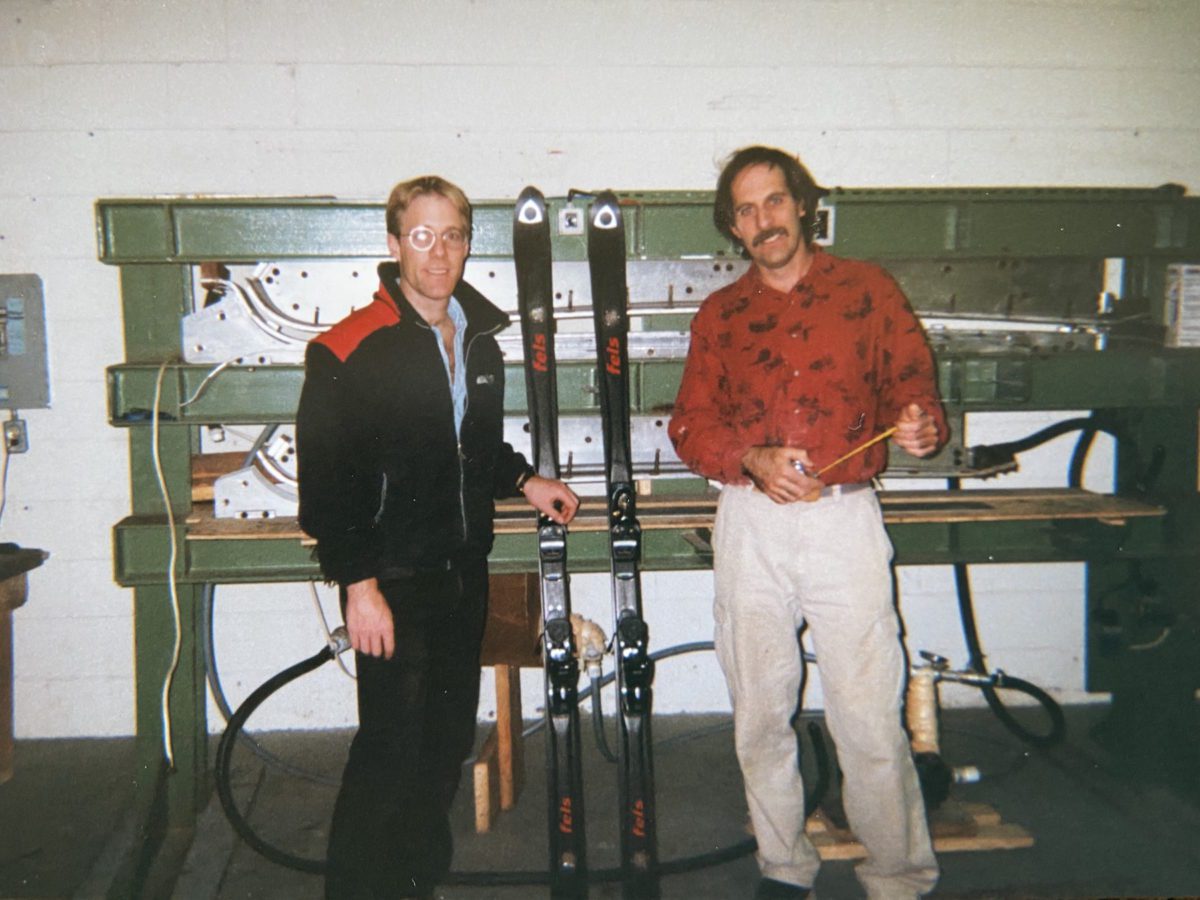
Attitude Skis – The Deets
- Available sizing: 163cm, 172cm, 178cm
- Available bindings: Look SPX 12 ($260); Look Pivot 12 ($300); Look Pivot 15 ($380). You can also order them without bindings.
- Attitude high-performance ski ($975): maple core, triaxial fibreglass composite.
- Attitude power dual core ($1240): power lens, feature tip/tail with balsa flax and maple core, preload camber, 20% lighter carbon/flax.
- For more information: skifels.ca
Author’s Note: Mountain Culture Group is not paid for these reviews. They are honest expressions of our opinions. In some instances we are given the product to keep but that does not sway our assessment. If we dislike a product and feel it would score a rating of less than 5/10, we simply won’t review it.
Peter Moynes
An award-winning photojournalist and commercial photographer, Peter’s also the founding publisher of KMC. His images have appeared in international magazines and newspapers, hardcover books and stock agencies and his commercial clients have included Nike, Patagonia, Ford, and Black Diamond.
Related Stories
Honest Review: Intuition Pro Tour Ski Boot Liner
Do Intuition ski boot liners stand up to the rigours of the Canadian arctic? For this honest review, our art director…
Review: Blizzard Zero G 108 Skis and Marker Kingpin Binding
December having arrived with a thud, and winter seemingly underway throughout the Cascadian and Kootenay high country,…
Honest Review: Truckit Bucket Tote
Wewerke Design says its Truckit Bucket will forever change the way you haul gear. Editor Vince Hempsall tests to see if…
Honest Review: Patagonia R0 Hoody
Wanna look like a Navy Seal? We suggest donning the Patagonia R0 Hoody the next time you're hanging in, on or by the…
Honest Review: Roscoe Outdoor Pants
Finding an awesome women's backpacking pant is not an easy task. We sent editor Clare Menzel out to review two such…
Honest Review: Black Diamond Skylight Tent
If she's at her desk, editor Clare Menzel is probably looking out the window. So we sent the stargazer into the field…


